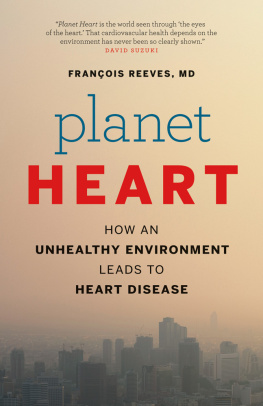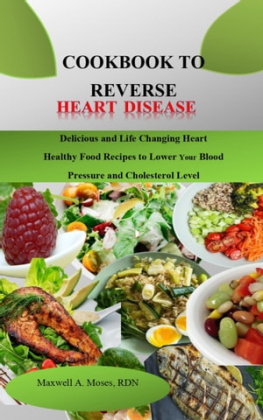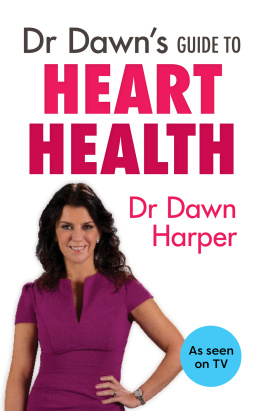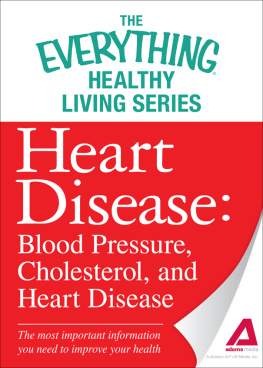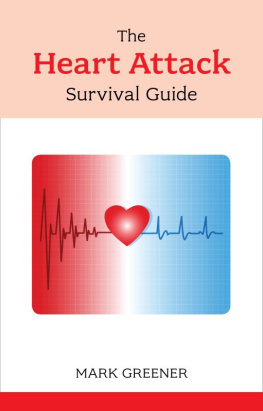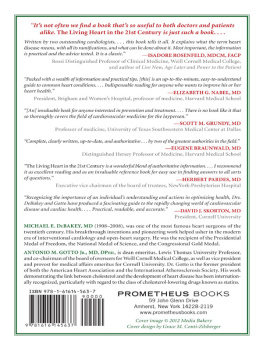one
SURGICAL
SHARPSHOOTER
THE ELITE MARKSMAN and the interventional cardiologist each has the same goal: to lodge a metal cylinder into the human heart.
For one, its a bullet; the other, a stent. One explodes the heart; the other makes it whole again.
They stand as symbols of the contradictory potential of human nature. These two experts go through similar rigorous, lengthy, and near-obsessive training. They spend thousands of hours repeating and tirelessly fine-tuning specific movements, to make the eye sharper, the hand surer. They test every advance in technology and knowledge, to expand skills acquired during years of hands-on work, years of peering at the infinitely distant and the infinitesimally small.
Ultimately, when these two experts fire their bullets at the heart, they almost always find their mark, but the end results couldnt be more different: one, death; the other, life.
This image is what sometimes comes to mind when I am summoned from bed at two in the morning to treat a heart attack: my colleagues and I in interventional cardiology are New Age sharpshooters. A whole SWAT team is called into actionparamedics, technicians, nurses, emergency teams, cardiologistsall putting their skills to work to implant a metal alloy tube into a blocked artery and thereby save a life. Our mission is to beat the clock, defy death and time, and conquer the disease.
We begin furtively at first, with a local anesthetic and a sedative. We introduce our catheter through the wrist artery and thread it to the coronary arteries of the heart, wherein the problem lies. Within minutes we clear the blocked artery and secure our stent there to keep it open. Meanwhile we continue to speak quietly to the victim of the attack. Released from the excruciating chest pain, the patient gradually becomes calmer from the sedation and the repair of the damaged artery.
It is a scene we find ourselves in at all hours of the day and night, involving all kinds of unanticipated encounterswith cabinet ministers and comics, police officers and drug addicts. The patient speeds along streets under the flashing red light of the ambulance, the standby team is roused from their dinner tables or beds, and all rush toward the cardiac catheterization laboratory. A team of twenty is about to work as one.
And what is the cause of all this commotion? An atherosclerotic plaque has chosen this moment to break away from the inner wall of a vital artery, unleashing a tsunami into the lives of both victim and healers.
A Worldwide Tsunami of Disease
There are seventy-two coronary sharpshooters in Quebec, the province where I practice medicine. We interventional cardiologists work in fourteen cardiac catheterization centers, each open twenty-four hours a day, seven days a week. We operate in teams alongside cardiovascular nurses and X-ray technicians and are supported by the staff of emergency rooms and coronary care units. In 2009 our teams treated 5,000 acute myocardial infarctionsheart attacksand we performed 36,000 catheterizations, including 16,000 angioplasties with stent placement. In addition, our cardiac surgeons performed 6,500 heart bypass procedures when more than an angioplasty was needed to repair the damage.
In 2008, approximately 6.5 million diagnostic and therapeutic interventional cardiology procedures were performed in the U.S. That number was expected to climb to approximately 8.1 million in 2013, with corresponding sales of interventional cardiology products projected to reach a total value of nearly $6.7 billion.
Cardiovascular disease (CVD) is the primary cause of death the world over. Each year more people die from CVD than from any other cause. In 2008 the World Health Organization (WHO) estimated that CVD is responsible for 17.3 million deaths annually or 30 percent of total deaths internationally. Among those deaths, an estimated 7.3 million are caused by heart disease and 6.2 million by stroke.
The WHO also estimated that, by the year 2030, some 23.6 million people will die annually from some type of cardiovascular disease, mainly heart disease and stroke. According to WHO projections, these two diseases will remain the primary causes of death.
In developing countries, the incidence of such disease is exploding. There has been a four- and in some countries a sevenfold increase in cardiovascular disease in just two generations.
Fingering the Culprits
Where does it come from, the grime in peoples biological plumbing that threatens to stop the heart? Why do highly trained teams of medical specialists so often have to rush to save the life of someone who felt perfectly well just an hour before?
When I studied medicine, I was taught that there are five classic risk factors for CVD: heredity, smoking, high blood pressure, high cholesterol, and diabetes. Most of these are silent killers; their damage is not visible until years later. So how were they identified? By quiet, patient investigative work on a grand scalethe Framingham Heart Studywhich makes a great detective story in its own right.
In 1948, the Framingham Heart Study embarked on an ambitious project in health research. At the time, little was known about the general causes of heart disease and stroke, but the death rates for CVD had been increasing steadily since the beginning of the century and had become an American epidemic.
An American Epidemic
Heart attacks were relatively infrequent in the nineteenth century, but in the years following the Second World War, one-third of Americans over the age of fifty suffered a heart attack. The death rate from CVD was double that from cancer. The epidemic of heart disease was so great that life expectancy in the United States remained stuck at age forty-five, despite the numerous medical advances of the period, particularly the reduction in child mortality, discovery of antibiotics, and improvements in surgical procedures. The situation in Canada was much the same, according to figures published by Statistics Canada. No data are available for the years before 1920, but the death rate from cardiovascular disease rose sharply over the next three decades, from 221.9 deaths per 100,000 people in the early 1920s to a peak of 414 deaths per 100,000 people in the 1950s.
The Framingham Heart Study
Alarmed, but confident in the strength of their organizational abilities and financial resources in the post-WWII era, American public health authorities decided to examine one city to discover why, over the age of fifty, one in three Americans had a heart attack. The city they chose was Framingham, a small urban center close to Boston, itself a hub for medical education and research whose universities were overflowing with many of the resources needed to carry out such a mega-study.
Investigators descended upon Framingham and drew up lists of families. Volunteer participants were invited in a systematic waynot randomly. In the end the official Framingham cohort was a group of 5,209 men and women aged thirty to sixty-two who were regularly interviewed and tested for CVD-related factors for more than forty yearsin many cases until death.
The Boston-based epidemiologists were able to determine with some precision who developed CVD and who did not. Because they knew so much about the health history of their cohort, they were soon able to make correlations between the different factors in a persons health history and the onset of heart disease.
This complexand invaluablemethod was first pioneered by the Framingham researchers and remains in wide use today. Indeed, successors of the original team are now following a fourth generation of Framingham citizens, who generously continue to participate in it for the good of humanity.
Since its launch in 1948 the Framingham Heart Study has published more than 1,200 scientific articles. One of its early researchers and later its director, William B. Kannel, was responsible for one of the most important breakthroughs in the history of medicine: he originated the concept of the

